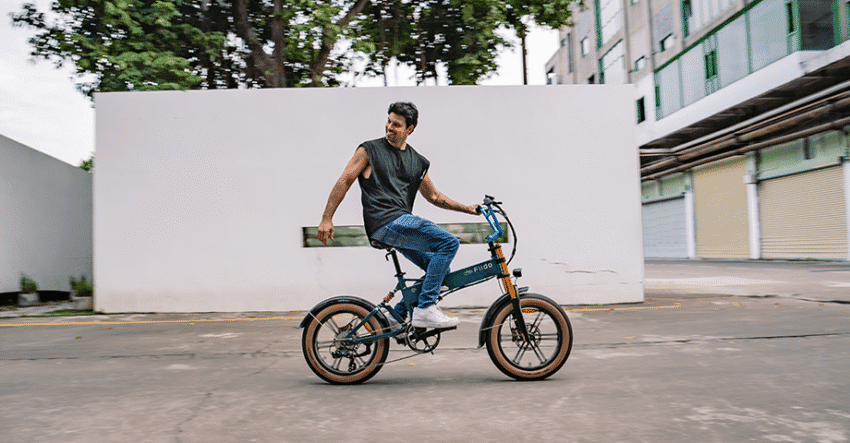
Are Fat Tire Electric Bikes Suitable for Daily Commuting?
Among the many types of e-bikes available on the UK market, one particularly eye-catching category is the fat tire electric bike.
As the name suggests, these bikes are equipped with oversized tires—typically 4 inches or wider—that were originally designed for sand, snow, and off-road trails. But many riders are now asking: can this “adventure-oriented” design also be practical for everyday urban commuting?
What Makes Fat Tire E-Bikes Different?
Compared with standard e-bikes, the most distinctive feature of fat tire models is their wide tires. The larger contact area delivers exceptional grip and stability. This design naturally absorbs road vibrations, making the ride smoother and more comfortable. Whether you’re dealing with cobblestones, potholes, or slick, rainy surfaces, fat tires offer greater confidence and control.
However, these advantages come with trade-offs. Wider tires mean greater rolling resistance and heavier overall weight. Most fat tire e-bikes weigh between 25–35 kg, which is 5–10 kg heavier than lightweight city models. And because they consume more energy, their range on the same battery capacity is often noticeably shorter.
Advantages for Daily Commuting
Comfort on rough roads. For commuters in areas with uneven roads, the natural cushioning of fat tires significantly reduces vibration. Riding over speed bumps, potholes, or worn pavements feels far less jarring compared with narrow-tire bikes.
Safety and stability. The extra grip improves handling in wet or slippery conditions—an important consideration in the UK, where rainy weather is common. Shorter braking distances and more stability translate directly into better safety.
Versatility on mixed terrain. For those commuting from the suburbs or countryside, where routes may combine tarmac with gravel or mud, fat tire e-bikes handle these conditions with ease. There’s no need to worry about switching bikes or getting stuck.
How to Choose a Commuting-Friendly Fat Tire E-Bike
If you decide to use a fat tire electric bike for daily commuting, here are some key factors to consider:
- Motor and battery. For UK commuters, it’s best to choose a 250W motor (to comply with EPAC regulations) paired with at least a 500Wh battery. This setup ensures around 40 km of reliable range, even with the added resistance of fat tires.
- Weight and portability. If your commute involves trains, stairs, or carrying the bike indoors, opt for a lightweight aluminium frame. Some models feature folding designs or removable batteries, making daily handling more practical.
- Comfort and safety features. Look for front and rear suspension to deal with bumps, as well as hydraulic disc brakes and powerful front and rear lights for braking performance and visibility in urban conditions.
- Tire size and maintenance. Most fat tires range from 4.0 to 4.8 inches. For mostly urban commutes, a 4.0-inch tire strikes a balance—retaining comfort while reducing drag. Regularly check tire pressure to avoid unnecessary energy loss.
Ultimately, the key is balancing comfort with efficiency while ensuring the bike is safe, compliant, and practical for everyday use.
The Challenges You Can’t Ignore
Despite their strengths, fat tire e-bikes are not without drawbacks.
Weight. At around 30 kg, these bikes can be cumbersome for commuters who need to carry them upstairs or onto trains. Standard city e-bikes, by comparison, often weigh closer to 20 kg.
Efficiency and range. The higher rolling resistance drains the battery faster. On average, fat tire e-bikes may offer 15–25% less range than standard models. For riders covering more than 20 km daily, range anxiety can be a real issue.
Cost and maintenance. Fat tires are more expensive to replace and wear down faster. In addition, motors and batteries working under higher loads may age more quickly, adding to long-term ownership costs.
Who Should Commute on a Fat Tire E-Bike?
Fat tire e-bikes are a strong choice if you live in suburban or rural areas where road conditions vary, and you often face mud, gravel, or rain. For shorter daily distances—around 10 km each way—they are more than sufficient. Riders who value comfort, stability, and a unique style will likely enjoy the experience.
On the other hand, if your commute is long, involves frequent train or bus travel, or storage space is limited, a lighter city e-bike is far more practical. For budget-conscious buyers, standard models also make more financial sense in terms of purchase price and upkeep.
A Practical Example
The Fiido M1 Pro is a mountain-style fat tire e-bike equipped with CST 20×4.0 inch tires and both front and rear suspension (60 mm oil-spring fork and rear spring shock). Weighing 26.8 kg with a maximum load of 120 kg, it’s reasonably balanced for commuting, though not ideal for frequent carrying on stairs or trains. Hydraulic disc brakes with power cut-off ensure strong braking, while its 88 km assisted range and 50 N·m torque are more than enough for typical 10–20 km commutes, including moderate hills. Overall, the M1 Pro highlights the strengths of fat tire e-bikes in comfort and rough-road capability, while also reminding riders to consider weight and efficiency trade-offs.
Conclusion
Fat tire e-bikes are not a one-size-fits-all solution for commuting. Their comfort, stability, and all-terrain adaptability make them appealing to many riders, especially those in suburban or rural settings. But their extra weight, reduced efficiency, and higher maintenance costs mean they are not the best choice for everyone.
If you’re a short-distance commuter who also enjoys weekend outdoor rides, a fat tire e-bike could be an excellent investment. But if your commute is primarily in the city, requiring portability and efficiency, then a lightweight city e-bike is the smarter option.
Before buying, always confirm that the motor and speed specifications comply with UK regulations, and carefully assess your daily needs. That way, you’ll find the electric bike that truly suits your commute and lifestyle.